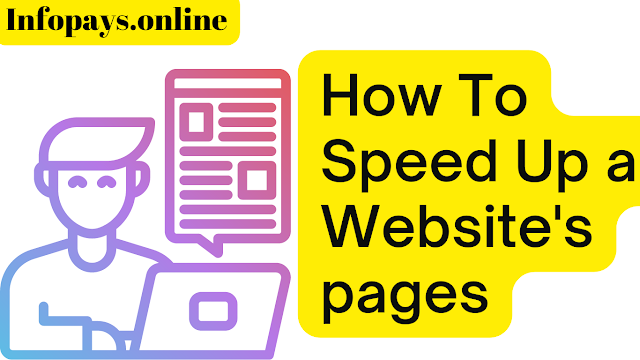What is Page Speed
Page speed refers to the rate at which a website loads and becomes available to the user. It is an essential factor in the user experience of a website, as a slow-loading page can frustrate visitors and lead them to leave the site. On the other hand, a fast-loading page can improve user satisfaction and engagement. A page is generally considered to have a good page speed if it loads quickly and efficiently. Many factors can affect a page's speed, including the size of the page, the number of images and other resources on the page, and the speed of the server on which the page is hosted. Improving page speed can involve optimizing the code and resources on the page, as well as using faster servers and other performance-enhancing techniques.
Importance of Speeding Up Page Loading Speed
Page loading speed is essential for SEO because search engines like Google use page speed as a ranking factor in their search results. In other words, if your website has a faster loading speed, it is more likely to rank higher in search results than a slower-loading website. This is because search engines aim to provide the best possible user experience to their users, and a fast-loading website is more likely to give a good user experience than a slow-loading one. Additionally, faster loading times can improve the overall user experience of a website, which can lead to higher engagement and satisfaction levels. This, in turn, can lead to more traffic and more opportunities for conversion, such as sales or sign-ups. Overall, improving your website's page speed can positively impact your search engine rankings and your overall online success.
Steps in Speeding Up a Blogger Website
Here are some tips for speeding up a Blogger website:
Optimize images: Make sure your images are properly optimized by using the correct file format (e.g., JPEG for photographs and PNG for graphics) and reducing their file size as much as possible without sacrificing quality.
Use a lightweight theme: Choose a simple and lightweight theme for your Blogger website, as heavy and complex themes can slow down the loading speed.
Minimize the use of widgets and gadgets: Too many widgets and gadgets on your Blogger website can slow down the loading speed, so try to use only the ones that are necessary and relevant to your content.
Enable Gzip compression: Gzip compression can help reduce the size of your web pages and improve their loading speed. To enable Gzip compression on your Blogger website, go to the "Settings" section and select the "Basic" tab. Then, check the "Yes" box next to "Enable Gzip Compression" and save your changes.
Use a caching plugin: A caching plugin can help speed up your Blogger website by storing a copy of your pages and posts in the cache so that they can be quickly served to visitors without the need to dynamically generate them every time. There are many caching plugins available for Blogger, so choose one that is well-rated and easy to use.
Enable lazy loading: Lazy loading is a technique that delays the loading of images and other content until they are needed, which can help speed up the loading of your Blogger website. To enable lazy loading on your website, go to the "Settings" section and select the "Basic" tab. Then, check the "Yes" box next to "Lazy Load Images" and save your changes.
As for WordPress users, read below
Steps in Speeding Up a WordPress Website
There are several ways to speed up a WordPress website, including the following:
Use a lightweight theme that is optimized for performance. This can help reduce the amount of code and resources that your site needs to load, which can improve its loading time.
Optimize your images by compressing them and using the correct image file format. Large or unoptimized images can significantly slow down your site, so it's important to make sure they are optimized for the web.
Use a caching plugin. Caching can help speed up your site by storing a static version of your pages and posts so that they can be served to users more quickly.
Enable Gzip compression. This can help reduce the size of your website's files, which can improve its loading time.
Use a content delivery network (CDN). A CDN can help speed up your site by distributing its static content (such as images and videos) across multiple servers around the world so that it can be delivered to users more quickly.
Reduce the number of plugins you use. Each plugin you use on your site can add additional code and resources, which can slow down your site. So, it's important to only use the plugins that are necessary and to regularly review and remove any unnecessary plugins.
Optimize your website's database. Over time, your website's database can become cluttered with unnecessary data, which can slow down your site. Regularly optimizing your database can help improve its performance.
Use a faster web host. Your web host plays a crucial role in the performance of your website, so it's important to choose a reliable and fast web host. If you're currently using a shared hosting plan, you may want to consider upgrading to a VPS or dedicated server, which can provide better performance.
By implementing some or all of these tips, you can help speed up your WordPress website and improve its performance.
Conclusion
In conclusion, there are several ways to speed up a WordPress website, including using a lightweight and optimized theme, optimizing your images, using a caching plugin, enabling Gzip compression, using a CDN, reducing the number of plugins you use, optimizing your database, and using a faster web host. Implementing these strategies can help improve your website's performance and loading time.
Labels :
#Blogger Tips ,
